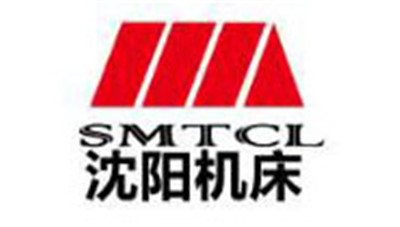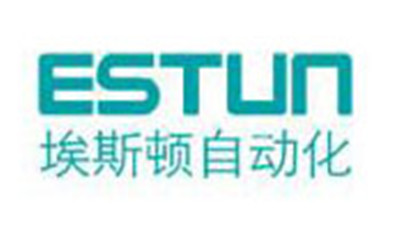Essential Checklist for Selecting Large Rated Current Common Mode Inductors in Your Projects
Table of Contents
- Key Considerations for Large Rated Current Common Mode Inductors Selection
- Understanding the Role of Common Mode Inductors in Electrical Projects
- Factors Influencing Inductor Performance in High-Current Applications
- Comparative Analysis of Different Types of Common Mode Inductors
- Practical Tips for Integrating Inductors into Circuit Designs
- Case Studies: Successful Applications of Common Mode Inductors
- FAQS
- Conclusion
- Related Posts
In today's world of electronics, there's really a growing need for components that are both efficient and reliable—especially when it comes to power management and filtering out noise. You know, Large Rated Current Common Mode Inductors are pretty much essential in keeping devices running smoothly and making sure they play nicely with electromagnetic compatibility (EMC).

Industry reports mention that the global market for inductors is expected to see quite a boost, thanks to more people adopting renewable energy setups and electric vehicles. These applications need components that can handle higher currents without messing up performance. By the way, Dezhou Xinping Electronics Co., Ltd., a high-tech company founded back in March 2001, specializes in making precise electronic transformers and related parts, like those big current-rated common mode inductors.
In this post, I’ll share a handy checklist to help you pick the right inductor for your projects—so you can make smarter choices based on the latest industry insights.
Key Considerations for Large Rated Current Common Mode Inductors Selection
When you're picking out large-rated current common mode inductors for your projects, there are a few important things to keep in mind. First off, make sure you understand the required inductance value and current rating for your specific application. According to a report from IEEE, it’s really crucial to choose an inductor that can handle peak currents well above what you expect during normal operation—this helps prevent saturation. Typically, you'd want one that can tolerate at least 20% more current than your max loads, just to keep things running smoothly even when conditions fluctuate.
Another thing to watch out for is how much the inductor heats up under load. Industry data suggests that if the temperature climbs more than about 40°C above ambient, it can start messing with its reliability and lifespan. So, it’s a good idea to check the DC resistance (DCR) and pick an inductor with good thermal management features to avoid overheating.
Pro tip: Go for inductors with a low DCR—it reduces energy losses and boosts efficiency, especially in high-power setups. Also, pay attention to what materials the inductor is made of. Ferrite cores, for example, are popular for high-frequency stuff because they have lower core losses, making them an excellent choice if you're aiming for energy-efficient designs.
Understanding the Role of Common Mode Inductors in Electrical Projects
When you're working on electrical projects, it's super important to get a good grasp of what common mode inductors do—especially in systems that handle high current loads. These little guys are key for filtering out unwanted noise and keeping signals clean, which is pretty much essential for smooth operation in today's complex electronic gadgets. By helping to reduce electromagnetic interference (EMI), common mode inductors actually boost the overall performance of a bunch of devices—think power converters where both efficiency and reliability are a big deal.
And with the shift toward renewable energy and smarter batteries, the importance of effective battery management systems (BMS) can’t be overstated. These systems use various electronic components—like common mode inductors—to make sure batteries run optimally and last longer. They’re not just about storing energy; they also play a big role in keeping the whole power system safe and functional. Picking the right common mode inductor is a big deal—it can really make a difference in how well everything works and how efficient the whole setup is. At the end of the day, it’s all about delivering better performance and quality in our tech, especially with all the rapid changes going on in the industry.
Factors Influencing Inductor Performance in High-Current Applications
When you're choosing large-rated current common mode inductors for high-current setups, it’s pretty important to get a handle on what really affects their performance. One of the biggest factors is the core material you go with. Stuff like ferrite and iron powder are pretty common choices because their magnetic properties play a big role in how well the inductor works—kind of shaping the inductance and how much current it can handle before saturating. According to a report from the IEEE, ferrite cores tend to have lower losses at higher frequencies compared to iron powder, making them a solid pick for anything running in the kilohertz range and beyond.

Another thing to pay attention to is the inductance value and how much current the inductor can safely carry. The saturation current—basically the point where the inductor stops behaving as it should—is super important if you want your inductor to handle peak loads without breaking down. Most manufacturers recommend selecting an inductor with at least a 30% safety margin over your maximum expected current. For example, a recent benchmark showed that inductors with higher saturation points last about 20% longer when used continuously at high currents, compared to ones pushed right to their limits. All in all, it’s really about picking an inductor that matches your specific current and frequency needs—you don’t want to skimp on that.
Comparative Analysis of Different Types of Common Mode Inductors
Choosing the right common mode inductor really matters if you want your electronic devices to perform their best. When you look at different types, there are pretty noticeable differences in how they behave—stuff like how much current they can handle and their inductance values. For example, a report from the Microelectronics Reliability journal points out that toroidal common mode inductors tend to be more efficient and have lower core losses compared to shielded or unshielded types. That’s why they’re often the go-to choice for high-frequency stuff, especially when you wanna keep EMI (electromagnetic interference) under control.
And don’t forget about power ratings! Inductors that can handle bigger currents—say, from 1A all the way up to 100A—are pretty common. An IEC report even mentions that those with higher ratings usually give better linearity and stay stable even under heavy loads. This is super important in things like motor drives or power supplies, where transients can really mess with the system’s reliability. Knowing these performance details helps engineers pick the right inductors—ones that not only fit the design but also meet all the regulatory standards. It’s all about making smarter choices to keep everything running smooth and efficient.
Practical Tips for Integrating Inductors into Circuit Designs
When you're working on adding common mode inductors to your circuit designs, there are a few real-world tips you probably wanna keep in mind — these can really make a difference in how well everything works. First off, it’s super important to check the voltage and current ratings of the inductor to make sure they match what your project needs. This is especially critical in automotive setups, where performance and reliability are king — especially now, with systems that need to really cut down on ringing and noise.

Case Studies: Successful Applications of Common Mode Inductors
Whenever you're looking into successful uses of common mode inductors, it’s really helpful to look at real-world examples that show how effective they are across different situations. One pretty key area is in switched-mode power converters—where designing good power filters can make a huge difference in how well the system performs. Recent research highlights how choosing the right inductors and capacitors, and analyzing their waveforms, can boost efficiency and cut down on current ripple. For example, by looking at the current and voltage patterns during various modes of operation, engineers can tweak things just right, making sure the system can handle high-efficiency demands without breaking a sweat.
On top of that, exploring synthetic inductors is pretty exciting—they’re like clever alternatives that mimic traditional inductors but with less power use. You’ll see their potential mainly in interleaved DC-DC converters, especially in high-voltage setups. Comparing different types of inductors and how they behave in various circuit arrangements helps engineers select the best components for the job. That kind of practical insight really pushes the boundaries in power electronics, whether it's renewable energy projects or complex gadgets. All in all, these studies and innovations are paving the way for smarter, more efficient power systems—and it’s kind of an exciting time to be in this field.
Essential Checklist for Selecting Large Rated Current Common Mode Inductors in Your Projects - Case Studies: Successful Applications of Common Mode Inductors
| Application Area | Inductor Type | Rated Current (A) | Inductance (µH) | Application Description |
|---|---|---|---|---|
| Power Supply Filter | Common Mode Choke | 15 | 10 | Used in switch mode power supplies to reduce EMI. |
| Telecommunication | Common Mode Filter | 30 | 20 | Integrated into equipment to minimize noise on data lines. |
| Industrial Automation | Dual Common Mode Choke | 25 | 15 | Employed in servo drives to control noise and improve performance. |
| Automotive | High Temperature Common Mode Inductor | 35 | 22 | Used in electric vehicles to reduce conducted EMI. |
FAQS
: The first consideration is to understand the required inductance value and current rating for the specific application, ensuring that the inductor can handle peak currents significantly above the normal operating current.
It is recommended to select inductors that can tolerate at least 20% higher current than your maximum expectation to maintain performance under varying conditions.
Evaluating the temperature rise is crucial because an increase of 40°C above ambient temperature can lead to reduced reliability and lifespan of the inductor.
Choosing an inductor with a low DCR rating minimizes losses and enhances efficiency, particularly in high-power applications.
Ferrite cores are often recommended for high-frequency applications due to their lower core losses and suitability for energy-efficient designs.
Toroidal common mode inductors often exhibit superior efficiency and lower core losses compared to shielded and unshielded options, making them ideal for minimizing EMI in high-frequency applications.
Large rated current common mode inductors typically fall within the 1A to 100A range.
Higher-rated inductors tend to deliver better linearity and stability under heavy load conditions, which is crucial for applications like motor drives and power supplies.
Optimized inductors and capacitors in power filters can significantly improve efficiency and reduce ripple in current, enhancing overall performance.
Synthetic inductors offer similar functionalities to traditional inductors with lower power consumption, showcasing versatility and effectiveness in high-voltage applications.
Conclusion
When you're choosing large rated current common mode inductors for your electrical projects, there are a few key things you'll want to keep in mind. Knowing how these inductors help filter out electromagnetic interference (EMI) can really make a difference in how well your designs work. It’s also helpful to compare different types of common mode inductors—this way, you can find the perfect fit for high-current applications without much hassle.
Getting some practical tips on how to smoothly integrate inductors into your circuits can save you a lot of headaches and boost performance. Plus, looking at real-life case studies where these inductors have been successfully used can give you some great ideas and insights. Here at Dezhou Xinping Electronics Co., Ltd., we’re a high-tech company dedicated to making top-notch electronic transformers, including large rated current common mode inductors, to meet all sorts of client needs. We’re always here to help you find the right solutions for your projects.
Related Posts
-

30 Reasons Why the Best 30 Kva Transformer is Essential for Your Global Procurement Strategy
-

Understanding the Versatility of 10kva Transformer Applications in Various Industries
-

The Future of Efficient Power Solutions with 30 Kva Transformers
-

How to Choose the Right Substation Transformer for Your Energy Needs Based on Load Calculation
-

Innovative Solutions for Optimal 33kv Transformer Performance
-

Understanding Problems Associated with Earthing Transformers in Power Systems

















